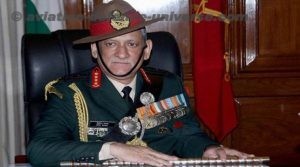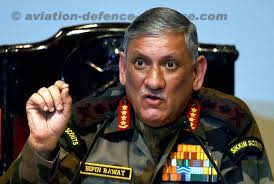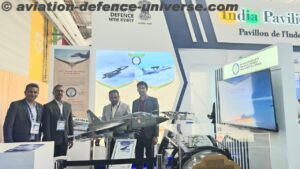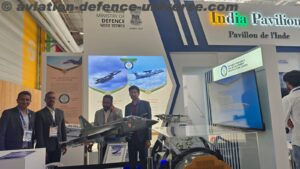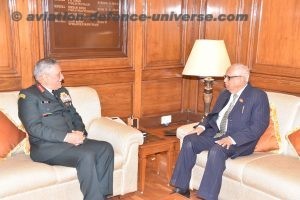
“There has been an increase in cease fire violations along the LC in 2017. These indicate Pakistan’s insincerity towards maintaining peace and tranquility along the borders. The troops have been given orders to retaliate appropriately to any unprovoked firing from across. Our aim is to curb trans-border infiltration and our response to Pakistan’s cease fire violations are mainly directed at countering terrorism and to take punitive measures against Pakistan’s troops along the LC, facilitating infiltration. At the same time, our counter infiltration grid has ensured that we continue to deny terrorists avenues of infiltration into the hinterland,” said Indian Army Chief General Bipin Rawat, UYSM, AVSM, YSM, SM in an exclusive interview to Aviation & Defence Universe (ADU),on the occasion of Army Day, 2018.
ADU.What are the major operational challenges that concern you as the Chief of the Indian Army and how do you plan to encounter them?
COAS.Challenges being faced by Indian Army encompass the entire spectrum of conflict. As we have territorial disputes along our Northern as well as Western borders, the nature of these threats in conventional domain is premised on land based threats which pose a constant challenge to our territorial integrity. In the sub conventional domain, terrorism forces us to commit resources and troops to counter this threat. Moreover, emerging threats for cyber, space and information domains are blurring physical borders and creating new challenges.
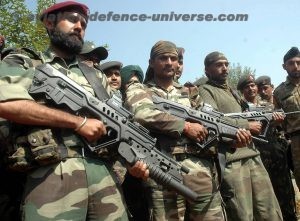 To secure territorial integrity against any external or internal threats as per mandated tasks, we have judiciously employed our resources. The security situation in J&K and North East are under control, despite desperate attempts by terrorists and their handlers to fan violence.
To secure territorial integrity against any external or internal threats as per mandated tasks, we have judiciously employed our resources. The security situation in J&K and North East are under control, despite desperate attempts by terrorists and their handlers to fan violence.
I can assure you that Indian Army is fully capable and well equipped to defend the national sovereignty; however we also need to develop greater capability. Operational capability development is an ongoing process that needs regular audit, and review, to keep it congruent to the security imperatives. The army specific requirements of force modernisation and making up critical deficiencies remain key focus areas. Our over dependence on imports had made the situation difficult, but, with the ‘Make in India’ endeavour and thrust on indigenisation, we are on the right path to address our capability requirements in a holistic manner.
ADU.Many procedural changes have been brought in the DPP recently. Indian Army needs to prioritise the procurements. What are the priority areas in your view that need to be brought to the notice of the Ministry?
COAS.India will continue to face complex strategic scenarios in an unstable neighbourhood and every incident has the propensity to graduate into a full scale war. Indian Army’s capability development and modernisation, therefore, has to be premised on the fundamental tenet of creating a strong battle ready force arrayed for resolute conventional response across the spectrum of conflict.
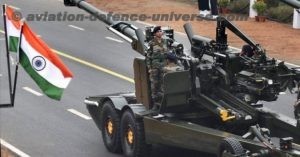 The modernisation of Indian Army to arrest the degradation of combat capability due to systemic deficiencies, are being addressed through steady systematic efforts. Despite inherent challenges we have articulated a modernisation strategy during the inception stage of the extant 13th Army Plan, which rests on three Cardinal Pillars. Firstly, a prioritised acquisition plan has been formulated post review of ‘Essential Capability’ needs with emphasis on Northern Borders. Secondly, there is an emphasis on innovative / alternate pathways for essential fleet sustenance and to cater for the long gestation periods in procurement. The third concurrent prong is the Rightsizing Initiatives which while leading to progressive reduction of manpower, would steer the Indian Army towards an optimal balance of the Capital vs Revenue allocations.
The modernisation of Indian Army to arrest the degradation of combat capability due to systemic deficiencies, are being addressed through steady systematic efforts. Despite inherent challenges we have articulated a modernisation strategy during the inception stage of the extant 13th Army Plan, which rests on three Cardinal Pillars. Firstly, a prioritised acquisition plan has been formulated post review of ‘Essential Capability’ needs with emphasis on Northern Borders. Secondly, there is an emphasis on innovative / alternate pathways for essential fleet sustenance and to cater for the long gestation periods in procurement. The third concurrent prong is the Rightsizing Initiatives which while leading to progressive reduction of manpower, would steer the Indian Army towards an optimal balance of the Capital vs Revenue allocations.
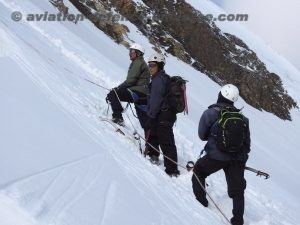 There is a broad national consensus towards force modernisation and self-reliance to reduce pitfalls of arms export control, induction of niche technology and retain strategic autonomy. The Government has unfolded the contours of the Strategic Partnership Model, which while energising the indigenous defence manufacturing eco-system, would aid in absorbing high end technologies, foster long term defence research & development capability and remove pitfalls of export controls. The Government to Government (G2G) Approach with allies is another avenue that has the potential to acquire capability faster.
There is a broad national consensus towards force modernisation and self-reliance to reduce pitfalls of arms export control, induction of niche technology and retain strategic autonomy. The Government has unfolded the contours of the Strategic Partnership Model, which while energising the indigenous defence manufacturing eco-system, would aid in absorbing high end technologies, foster long term defence research & development capability and remove pitfalls of export controls. The Government to Government (G2G) Approach with allies is another avenue that has the potential to acquire capability faster.
ADU.Is there a changed policy on managing the LC post repeated ceasefire violations by Pakistan at the border?
COAS.There has been an increase in cease fire violations along the LC in 2017. These indicate Pakistan’s insincerity towards maintaining peace and tranquility along the borders. The troops have been given orders to retaliate appropriately to any unprovoked firing from across. Our aim is to curb trans-border infiltration and our response to Pakistan’s cease fire violations are mainly directed at countering terrorism and to take punitive measures against Pakistan’s troops along the LC, facilitating infiltration.
At the same time, our counter infiltration grid has ensured that we continue to deny terrorists avenues of infiltration into the hinterland.
Overall, there is no change in policy with respect to management of LC or on dealing with cease fire violations. We remain committed to peace on borders including the LC and remain dedicated to build confidence through established means like hotlines, flag meetings as well as weekly talks between Brigadier rank level officers at respective military operation directorate.
ADU.Do you subscribe to the one border-one command concept at the Line of Actual Control (LAC), 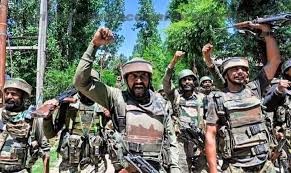 which has been a bone of contention between Army and ITBP?
which has been a bone of contention between Army and ITBP?
COAS.Yes, one subscribes to this concept. However, what we are looking at is command from the operational perspective and not a perspective of administration. The principle of ‘one border – one force’ enunciated by the GoM pertains to deployment, responsibility and accountability of forces along the borders. Along the active borders, including LC or LAC, the responsibility is of Indian Army.
The unity of command is an established principle in management of security. Importance of efficient management of LAC along the entire Northern border demands a focused and coordinated approach under a singular structure for operational control. The administrative aspects can continue to be managed by respective force hierarchies.The issue of placing ITBP battalions under operational Control of the Army needs to be looked at dispassionately and entirely from the view point of synergy in conduct of operations to meet national security requirements
ADU.Our progress on infrastructure development is slow.What as per your should be done to improve construction speed and remove bottleneck?
COAS.Infrastructure development is one of the key imperatives of operational preparedness and force application along the borders and as such, upgradation and development of infrastructure along the Northern Borders is being carried out in a holistic and comprehensive manner.
Delay in achieving the laid down projected date of completion (PDCs) of GS roads is owing to various factors to include forest and wild life clearances, land acquisition, lack of availability of quarries and labour. It is further compounded by difficult terrain, weather conditions, limited working season as also budgetary constraints which impacts the progress of work.
MoD has taken various initiatives to improve the road infrastructure development process. The initiatives include enhanced powers to BRO executives, increased powers to BRO for procurement of indigenous/ imported equipments and raising the relevant issues with State Governments. All these steps will ensure compressing the procedural delays in completion of road infrastructure, provided adequate budgetary support is ensured by the Government.
To expedite construction of defence related infrastructure in border areas, Indian Army has sought general approvals under various Acts to compress the construction timelines. A high level committee has also been constituted by the Ministry of Environment & Climate Change (MoEF& CC) to review the exemptions under various Acts Viz. Environment Protection, Forest Conservation, Wildlife Protection to enable expeditious development of defence related infrastructure.
Further, outsourcing of roads to reputed civilian contractors/ firms, execution of road construction in Engineering, Procurement and Construction (EPC) mode has also been resorted, as a change in road construction philosophy by BRO.
ADU.There is a continuous talk on removal of full/ partial Armed Forces Special Power Act (AFSPA) and Army from J&K. What are your views and what will you recommend to the Government on this?
COAS.AFSPA is an enabling act which provides operational flexibility and protects the Armed Forces personnel operating in an extremely hostile environment against terrorists and other inimical elements. There are procedural safeguards in AFSPA to prevent its misuse. AFSPA does not provide de-facto immunity to the Armed Forces personnel. The Act provides legal protection as also stipulates the procedure for prosecution of personnel of Armed Forces so as to prevent their getting implicated in fabricated cases. This Act is applicable only in the areas declared ‘disturbed’ by Government.
The situation in J&K is stable yet fluid. The return of normalcy to J&K and stability has been achieved by relentless operations and synergy amongst security agencies and the State Government. Apart from the situation in J&K we should not forget that the terror infrastructure in Pakistan is intact. Presently, the situation is operationally not conducive for repealing any of the enablers including AFSPA from the State.
ADU.What is the status of our joint and integrated operations in the future and how are the Armed Forces preparing for such operations, equipment wise and doctrinally?
COAS.Tri-services synergy is an imperative to execute effect based operations. The armed forces accrue synergy in capability augmentation by joint planning and prioritisation of future procurements. We train jointly at bi-services as well as tri-services levels. This includes joint courses at various levels, war-games and exercises with troops.
Infusion of jointness in our doctrines accrues from the joint and collegiate evolution process. Our operational and tactical concepts do undergo periodic revision to remain current and congruent to aggregated employment philosophy of our individual services capabilities.
The joint doctrine of the Indian Armed Forces has been published recently in April 2017. In addition, the Indian National Defence University is being set up as a fully autonomous institution, to be constituted under an Act of Parliament. The Defence Acquisition Council headed by the Defence Minister, is the integrated structure to screen and finalise all procurement and acquisitions by the Indian Armed Forces. Long term requirements of integrated and joint operations have been incorporated in the Long Term Perspective Plan prepared by HQ Integrated Defence Staff.
ADU.Last year’s budget allocated to Army was below the desired requirements. What are your expectations from the forthcoming Budget?
COAS.India faces a multitude of national security challenges both external and internal. Foresight demands that India’s military strength and capabilities address diverse challenges by way of conventional and unconventional challenges. Also India’s aspirations as a dominant global player demands significant enhancement of our military capabilities.
Number of proactive steps to address the criticalities have been taken. These range from enhancement of Defence Minister Financial Powers in Capital Procurement, Emergency Powers and Special Provisions for making up critical deficiency and ushering in of systemic reforms in the financial domain.
These initiatives are now required to be backed up by budgetary support. I am looking forward towards dedicated funds for Capital Acquisition Schemes (Capability Development), emergency powers, making up of critical deficiency, security of military stations and meeting the mandatory expenditure on sustenance and maintenance of the Army.
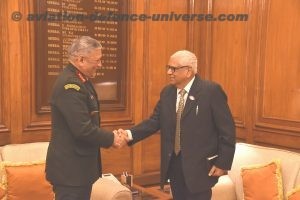 ADU.What will be your endeavour as Chief to increase the flow of promotion of soldiers from ranks to commissioned officers, which is, at the moment, is less as compared to Navy and Air Force?
ADU.What will be your endeavour as Chief to increase the flow of promotion of soldiers from ranks to commissioned officers, which is, at the moment, is less as compared to Navy and Air Force?
COAS.To meet the career aspiration of soldiers to become commissioned officers, three in-service entries viz ACC, SCO and PC (SL) are operational for which age of induction ranges from 20 years to 42 years. In order to increase the flow of promotion of soldiers from ranks to commissioned officers, a proposal to restructure the PC (SL) cadre is under active examination wherein the cadre will become generic cadre and more candidates will become eligible for this entry. As the proposal involves a substantial increase in select ranks, it will surely meet the career aspiration to a large extent.


































